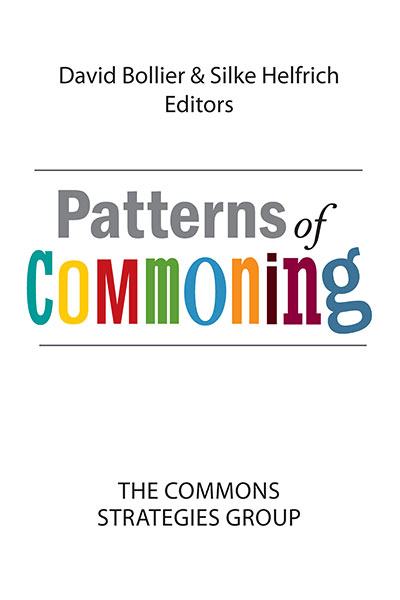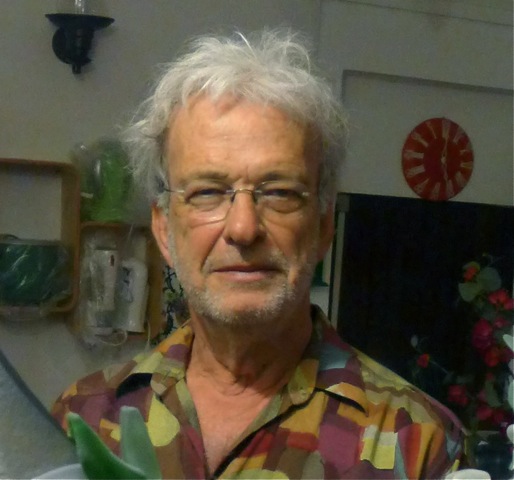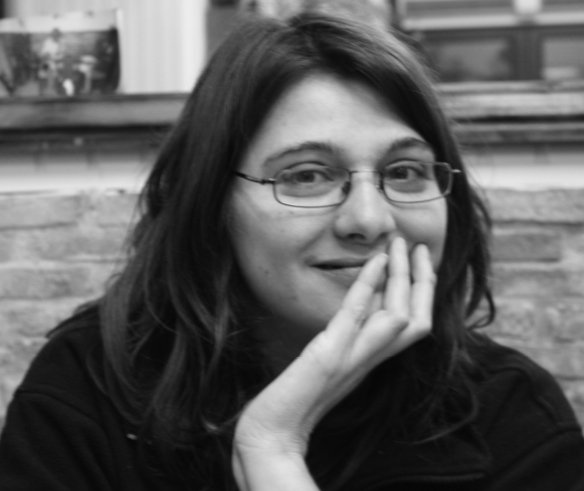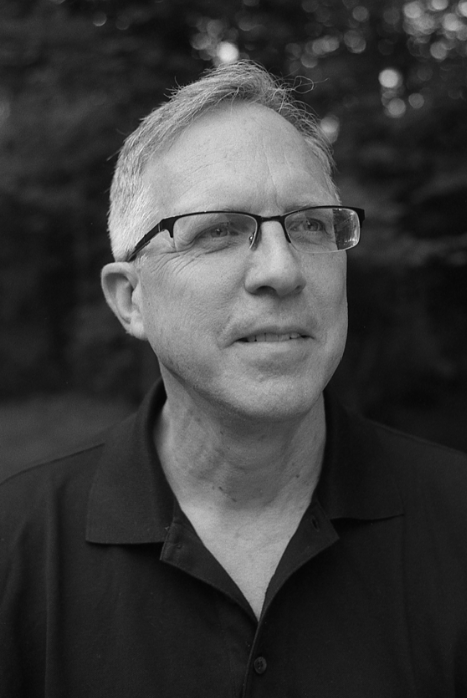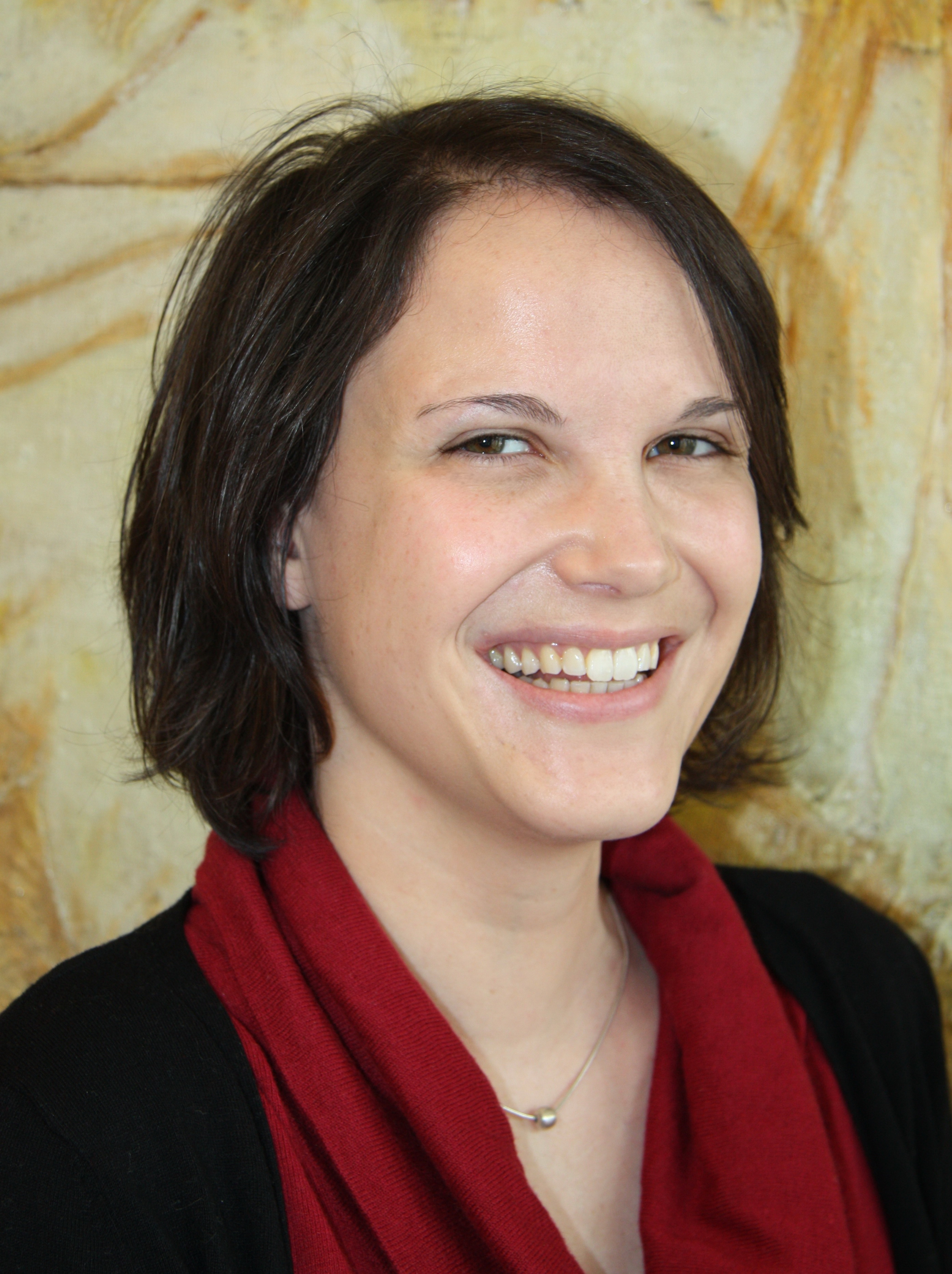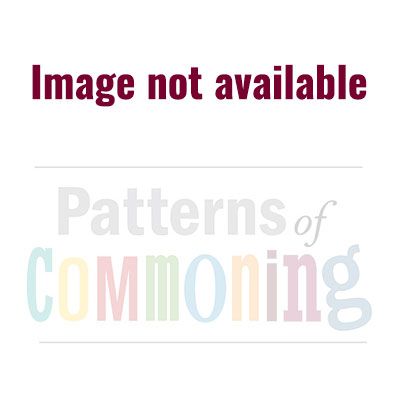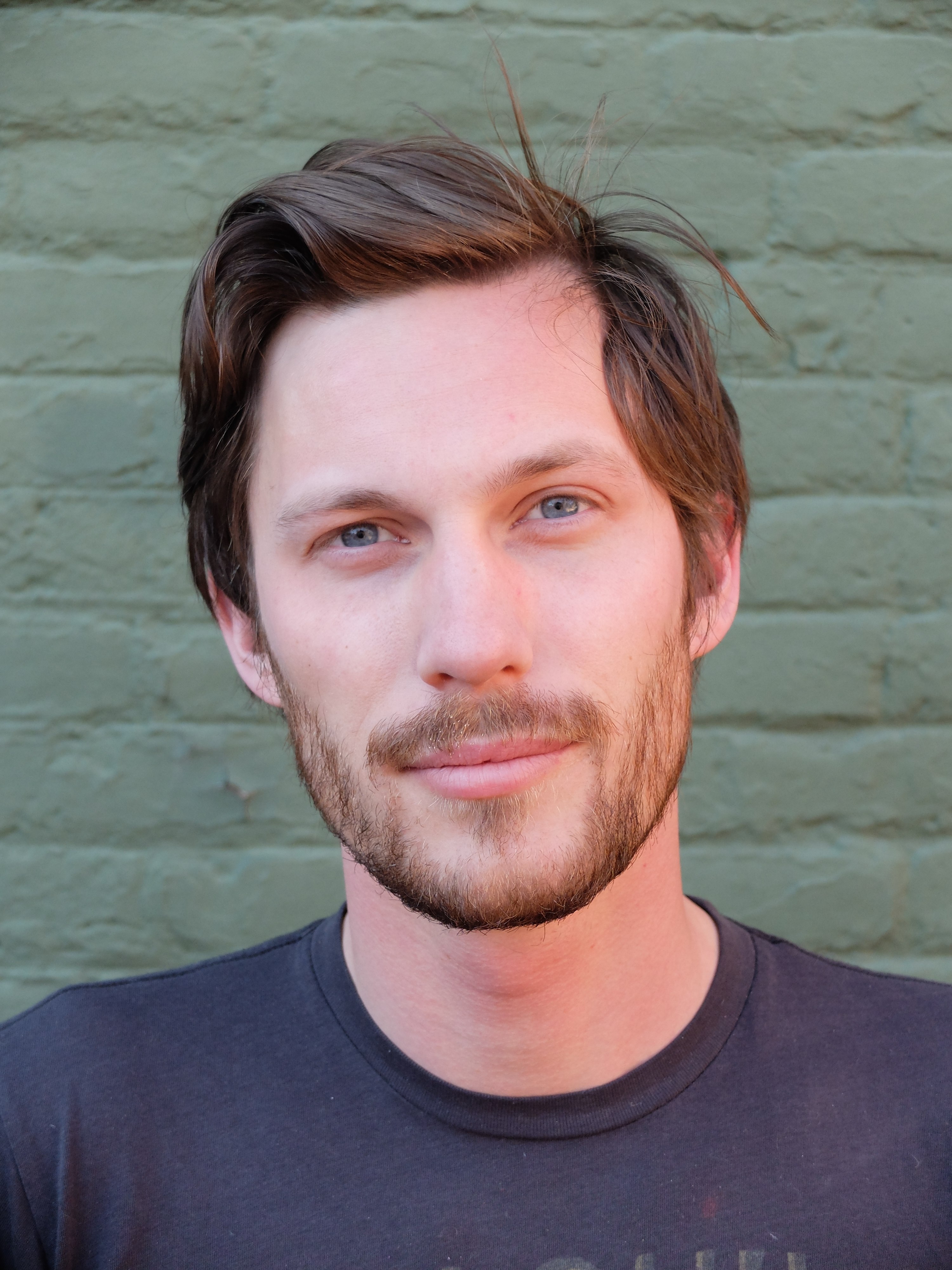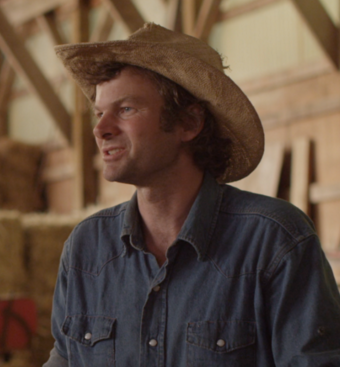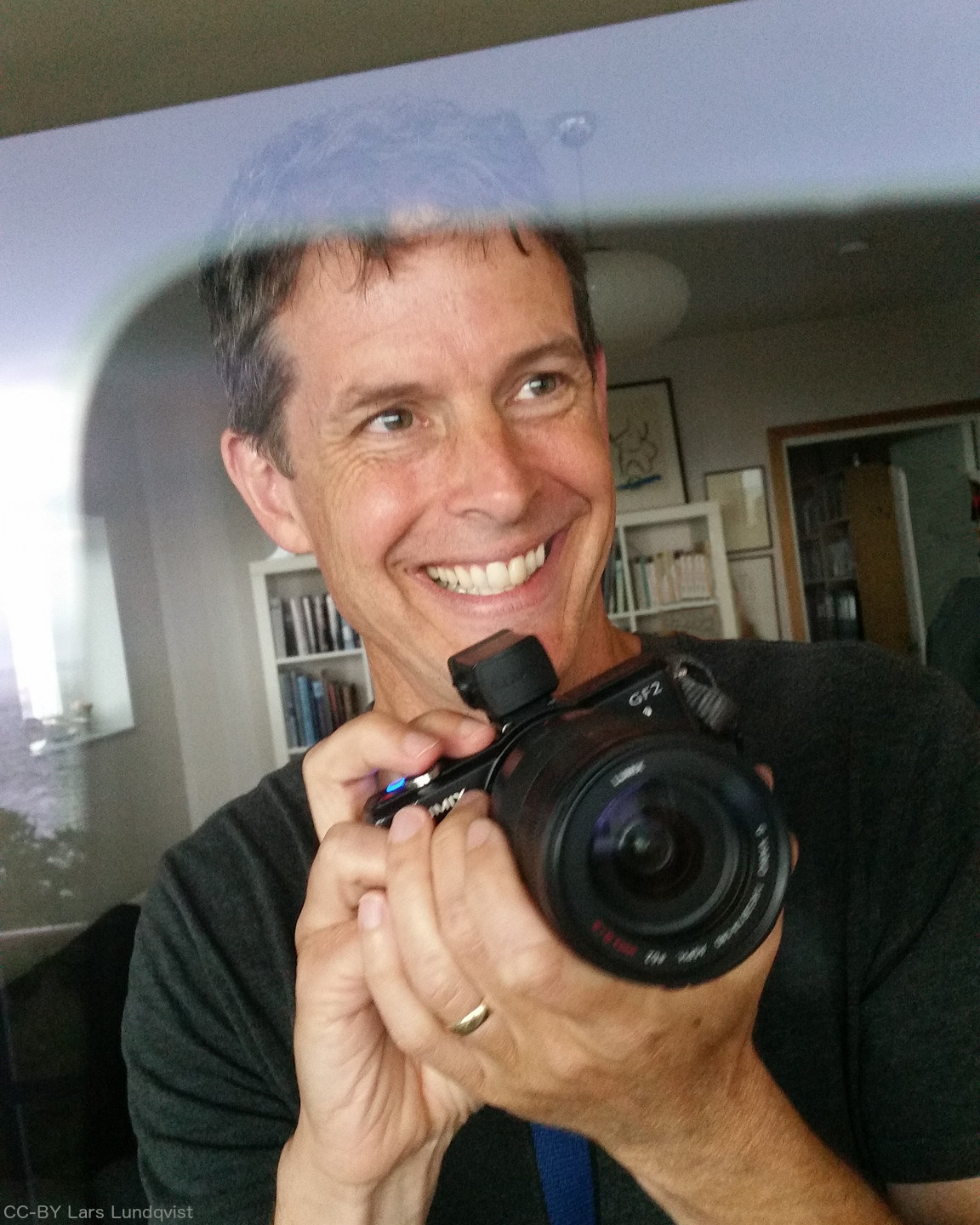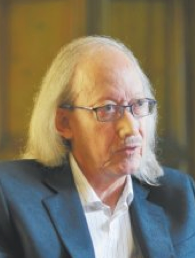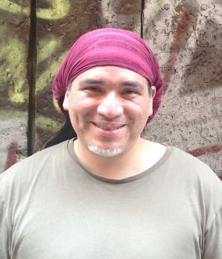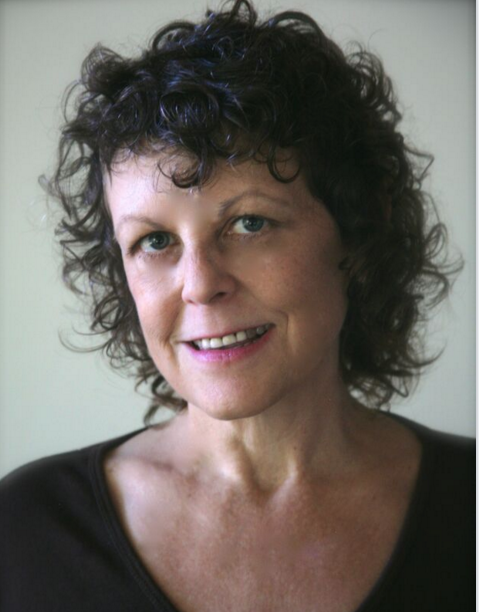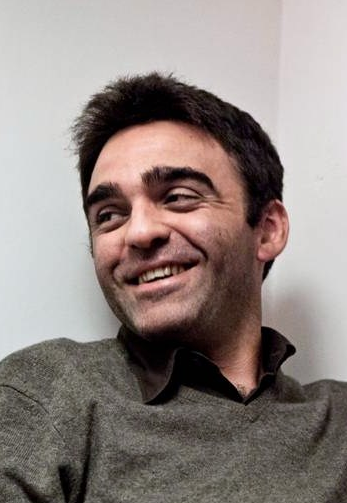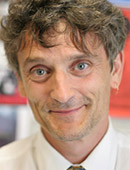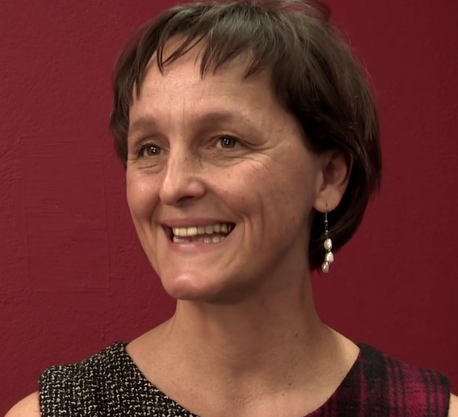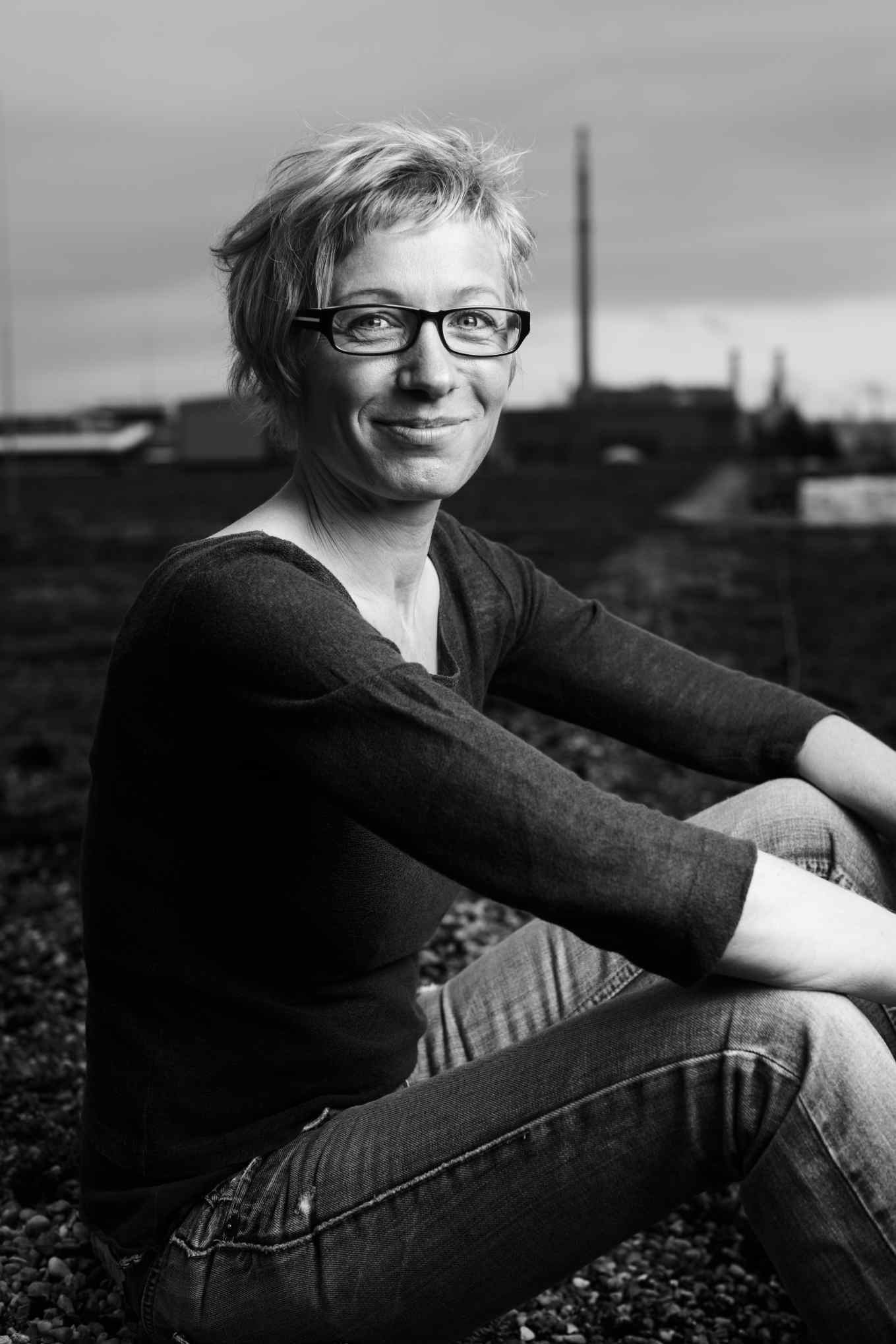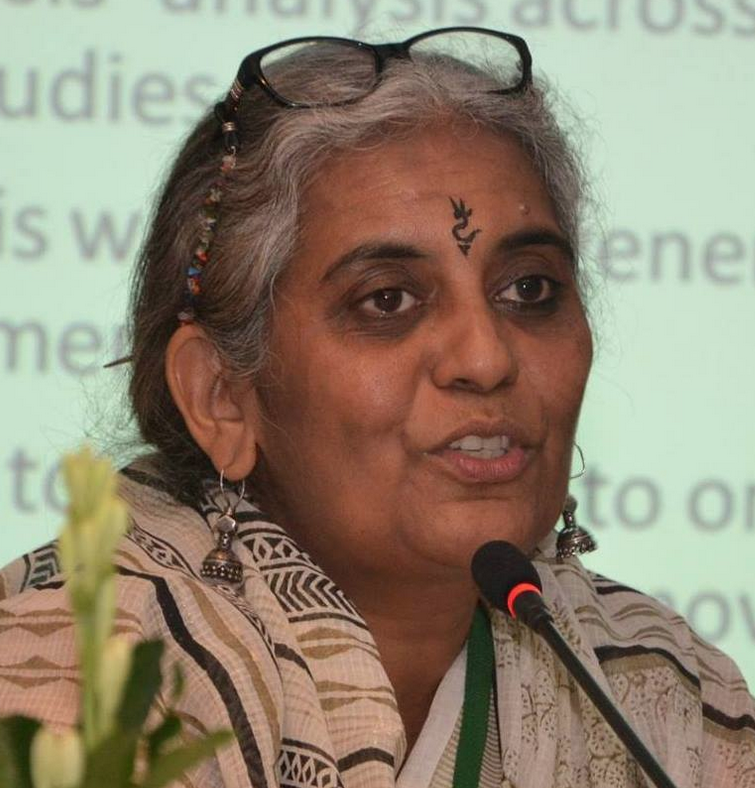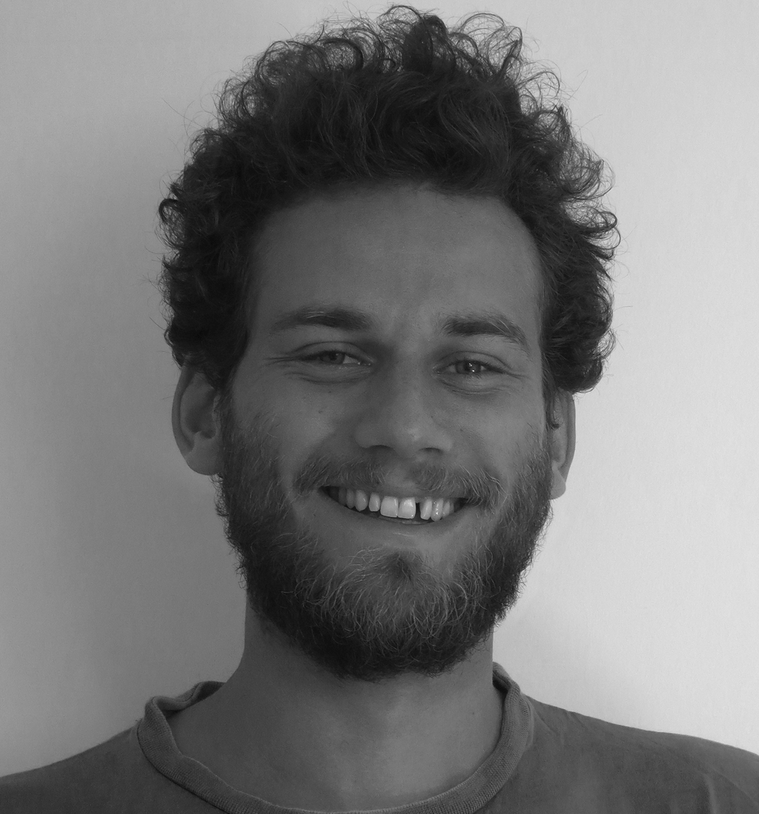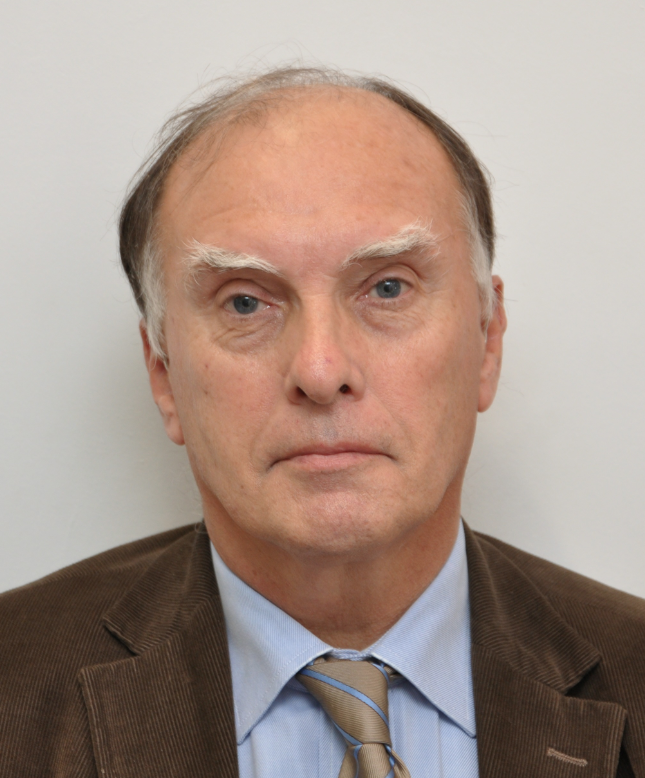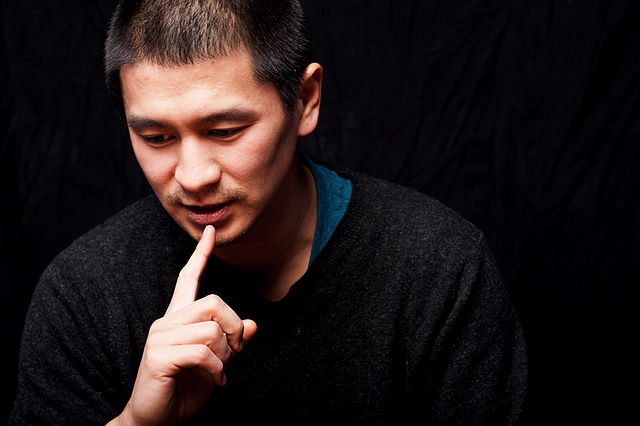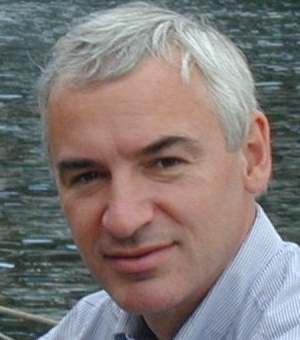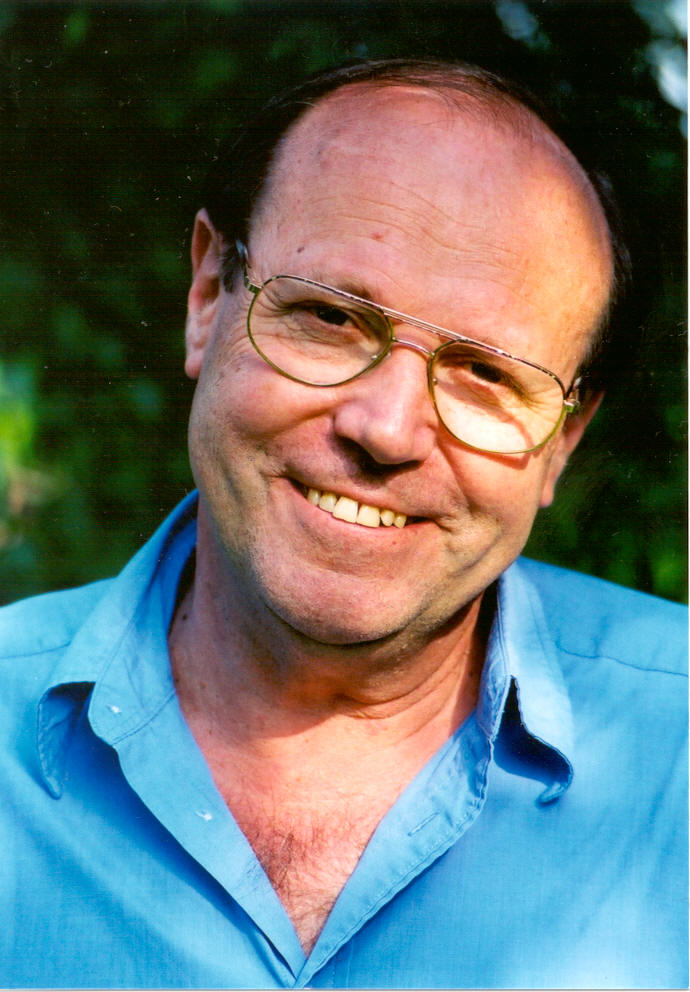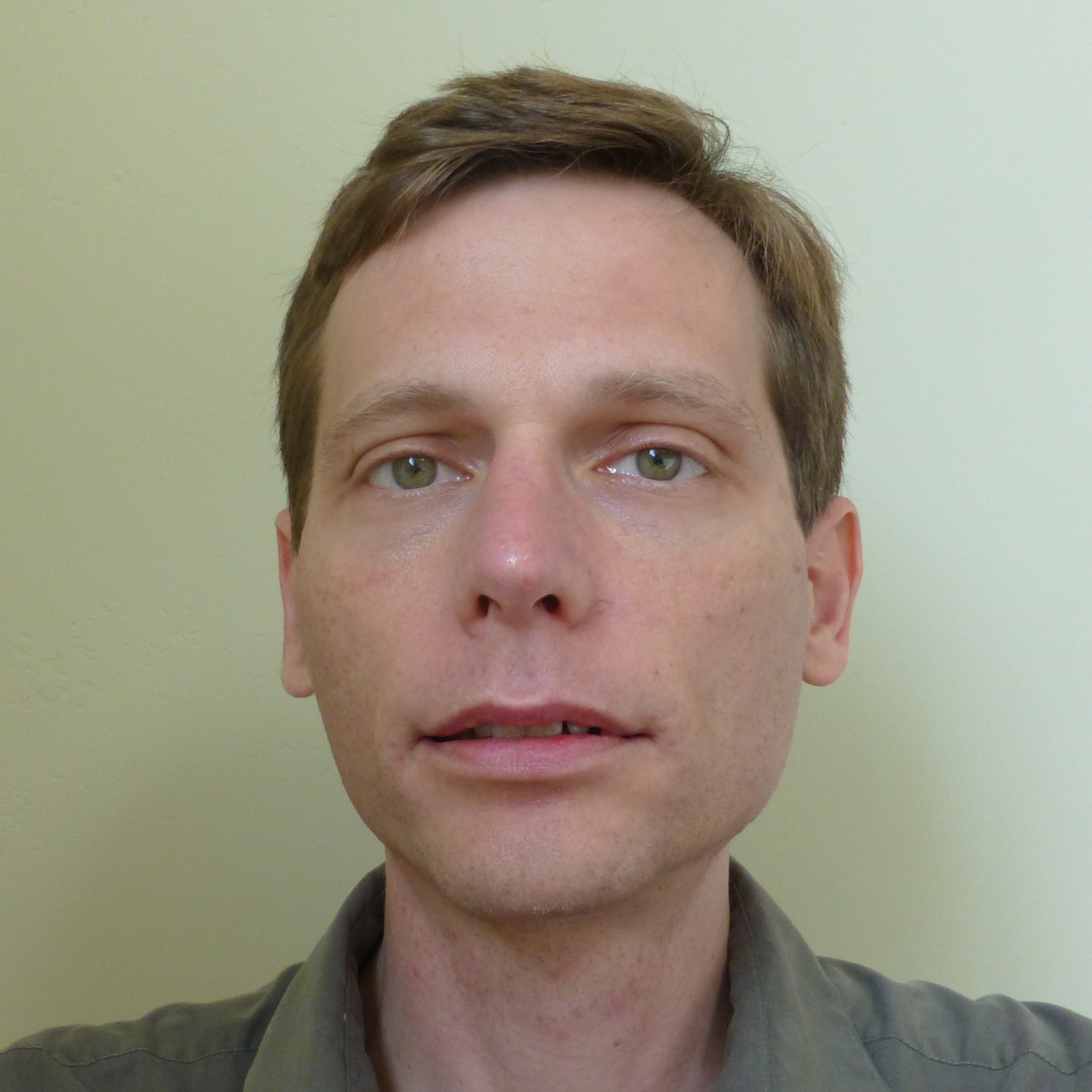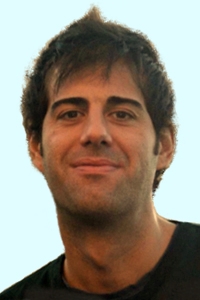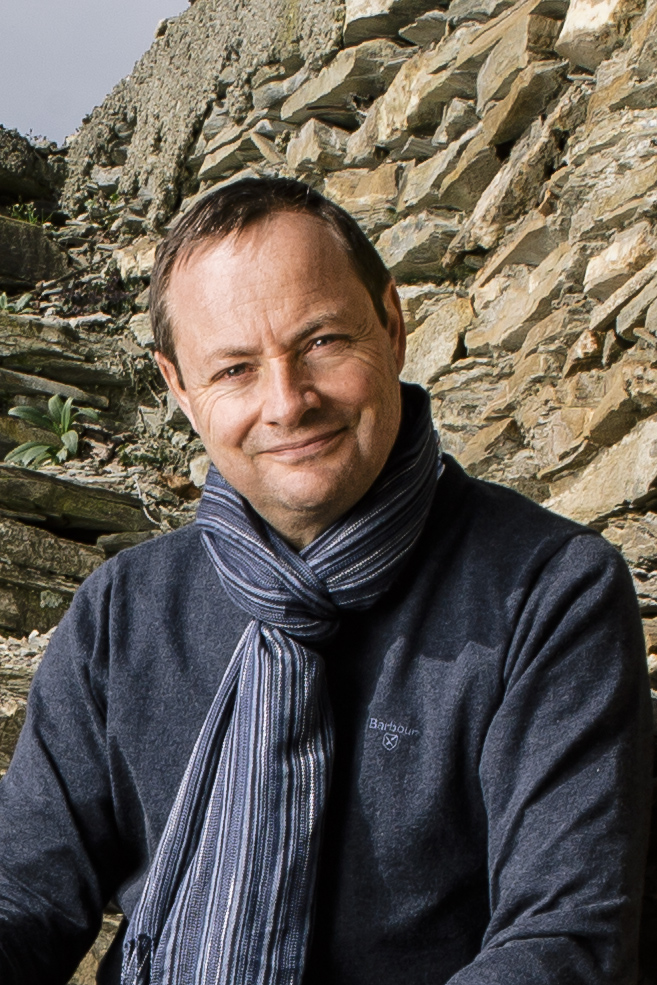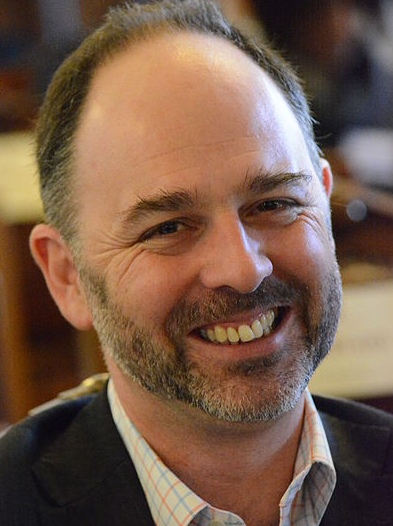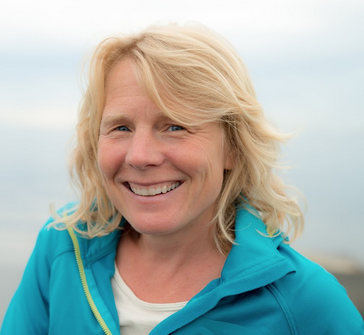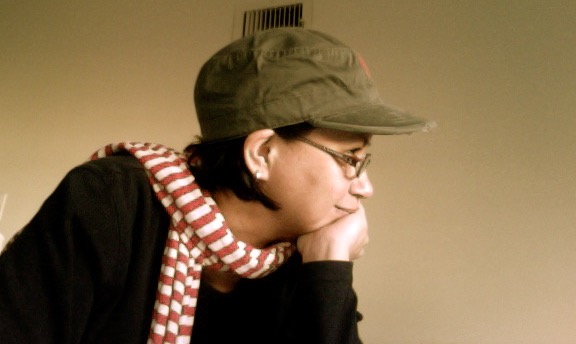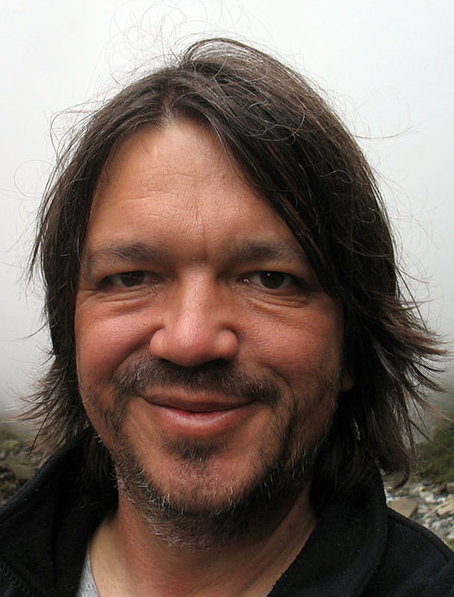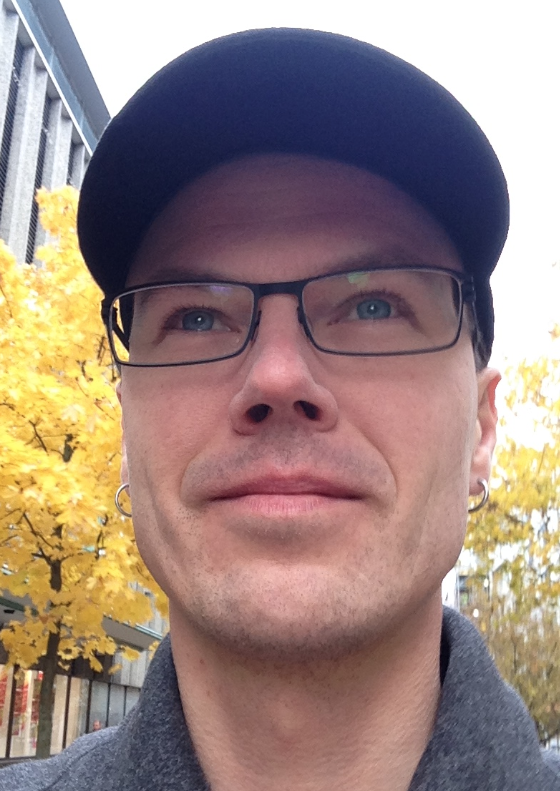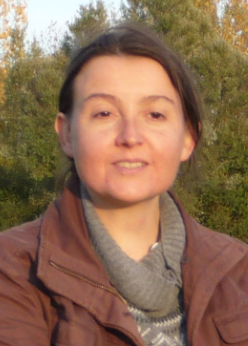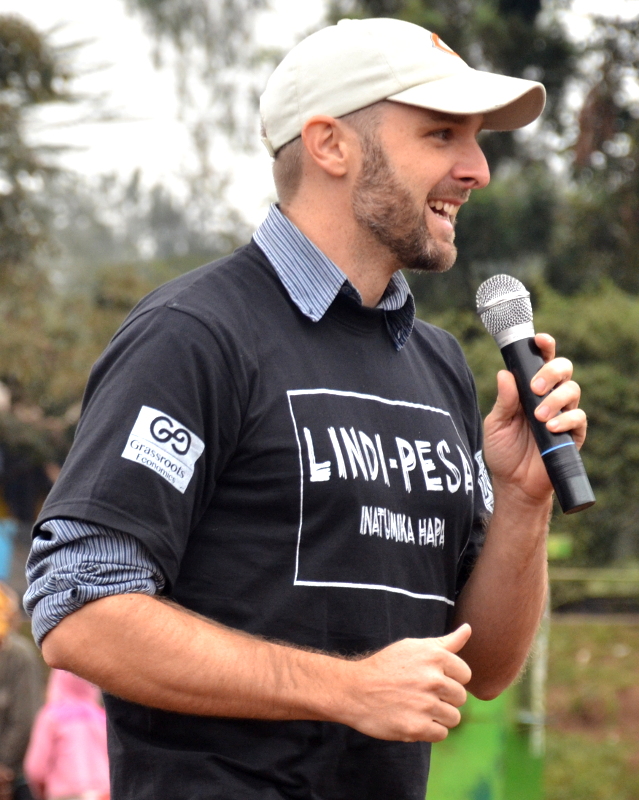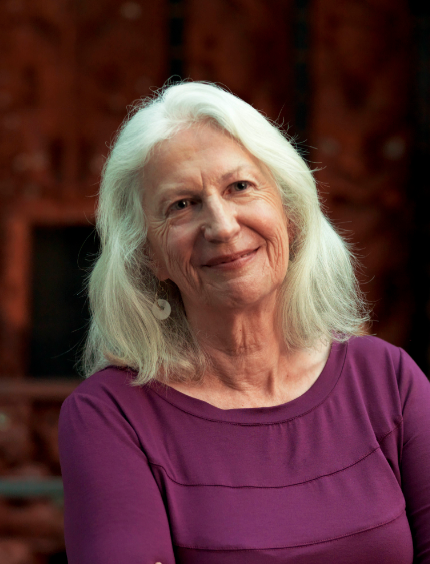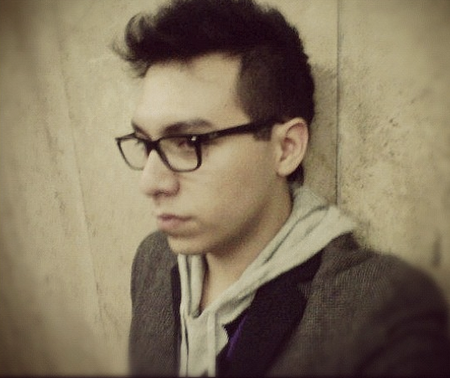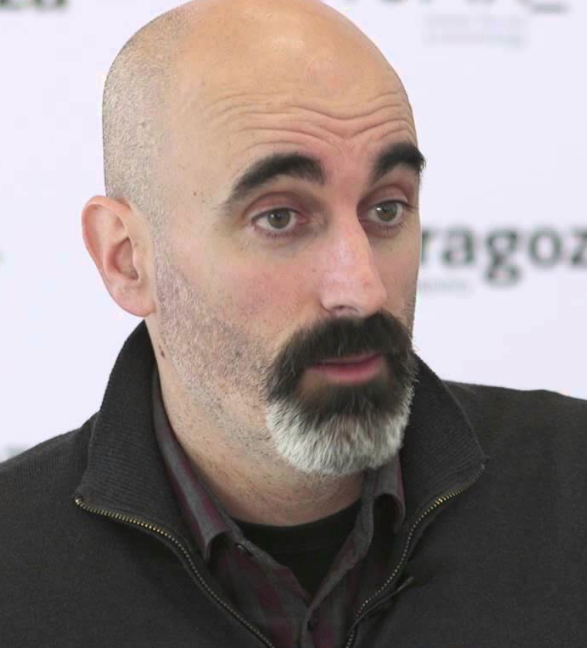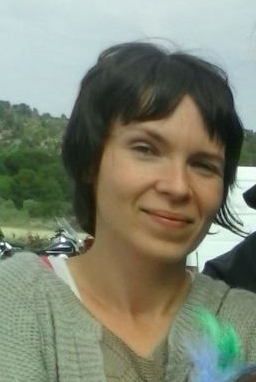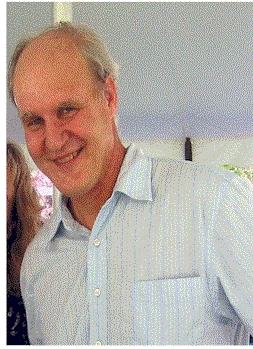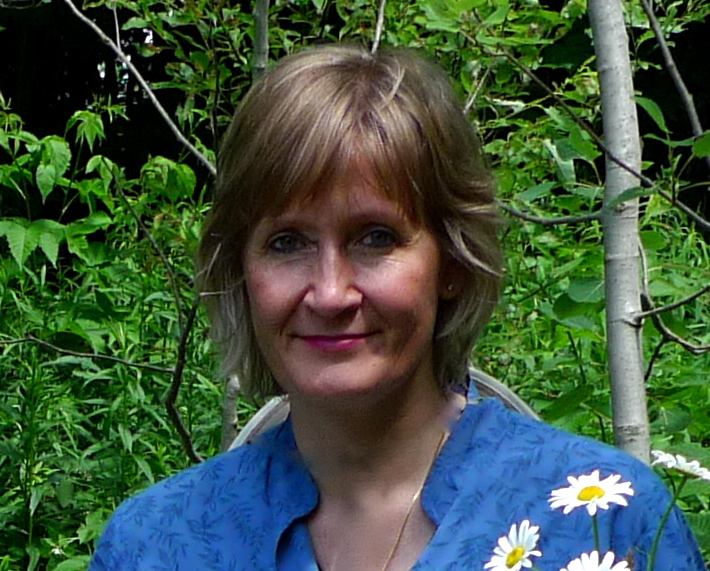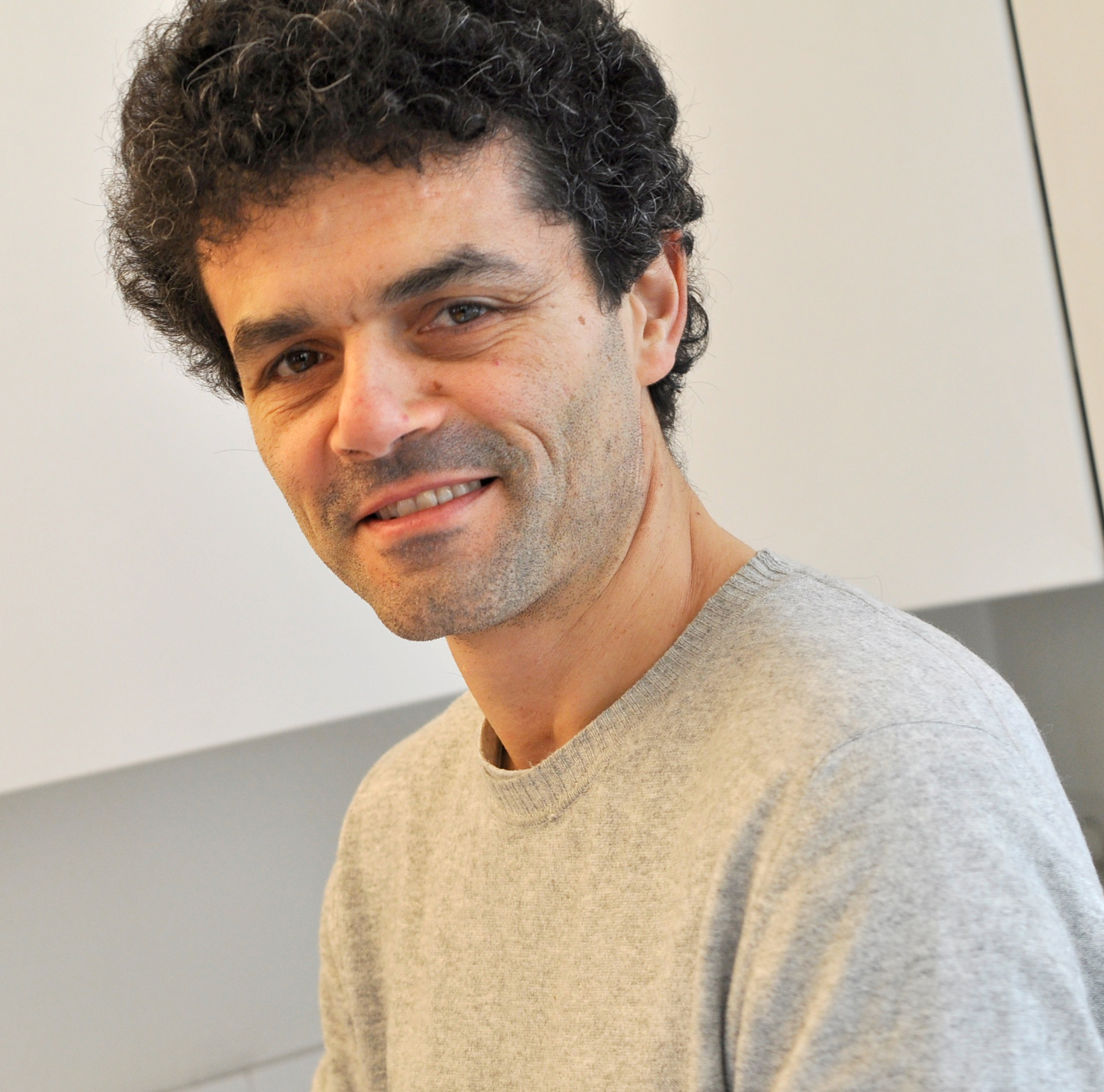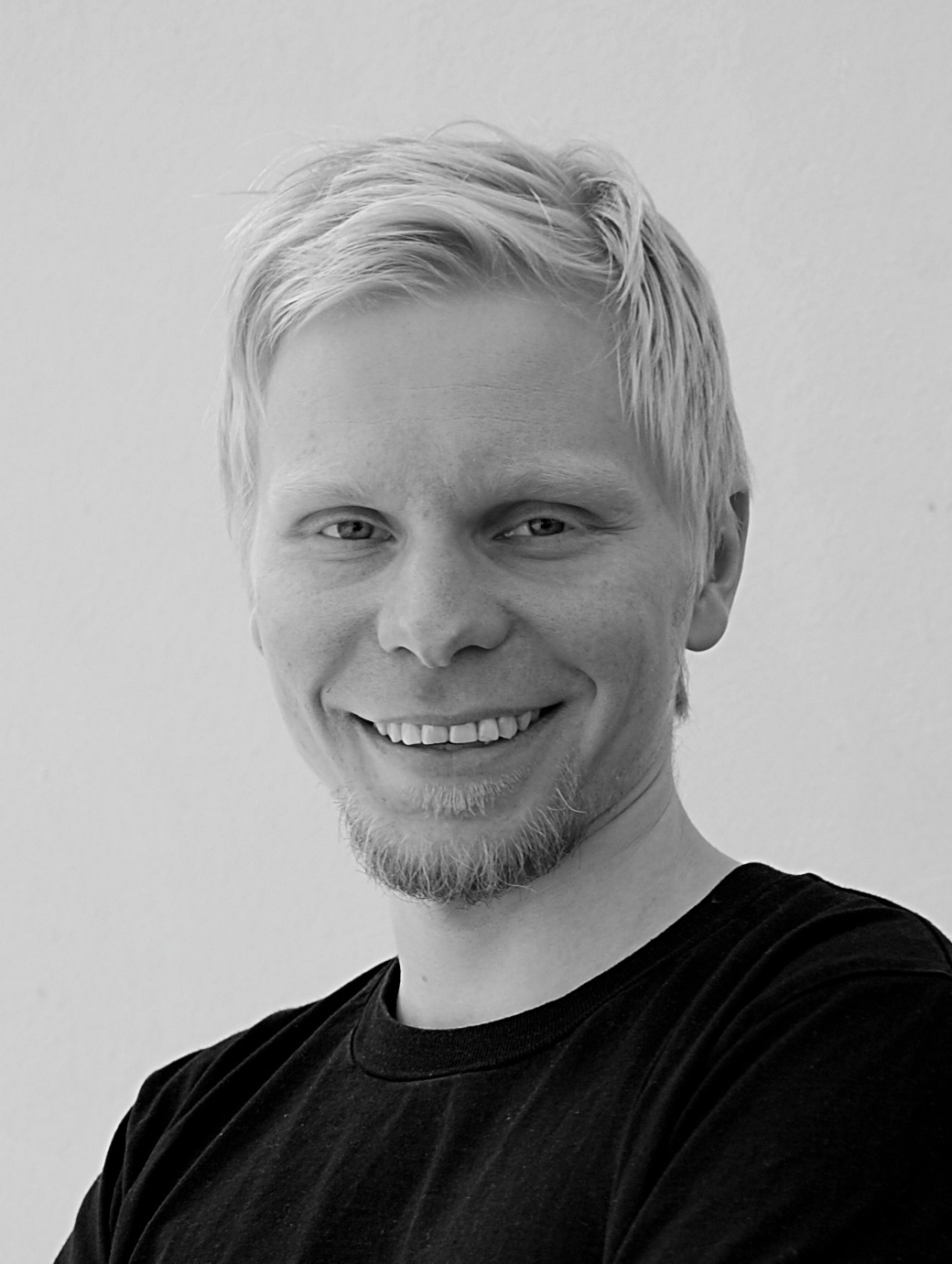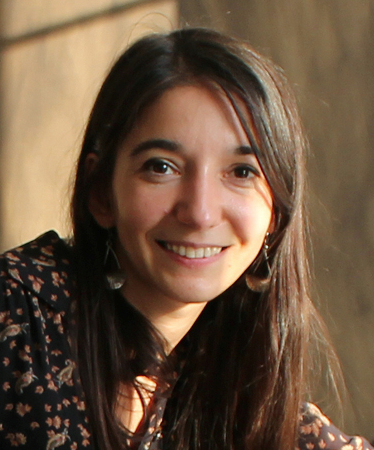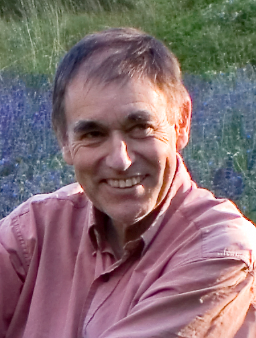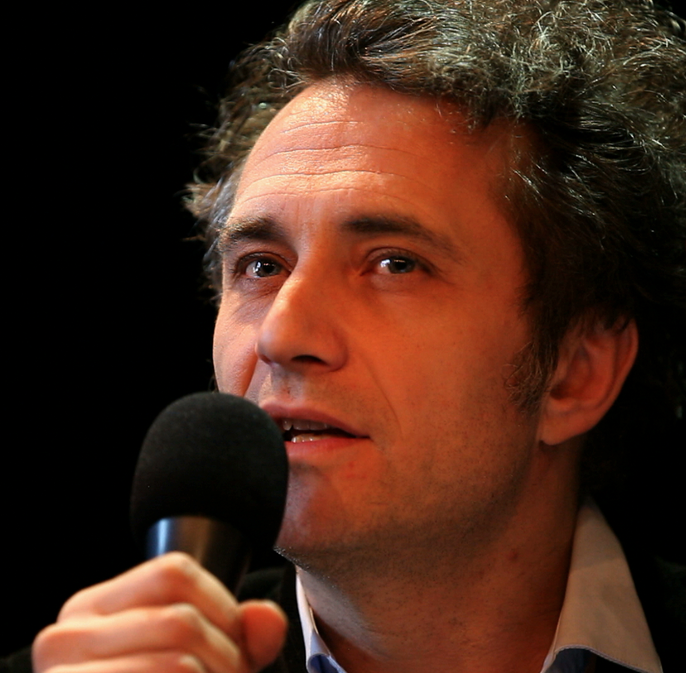Alain Ambrosi (Canada) is a designer and producer of intercultural projects, independent researcher, author, videographer and producer of the Remix The Commons Project.
Patterns of
COMMONING
Reality as Commons: A Poetics of Participation for the Anthropocene
By Andreas Weber
“What is, then, a philosophy of relation?
Something impossible, as long as it is not conceived of as poetics.”
– Edouard Glissant
The World as Consciousness
Near Sant’Andrea, Italy, the sea laps onto the slabs of rock that form the edge of the island of Elba. The waves, smooth as fish bellies, slate gray, white, and aquamarine, shatter into liquid fragments on the rock. In the distance lies Corsica, barely visible in the haze, under a fan of fingers of light. The water that strokes the stones, the boulder rounded and worn away, the wind tousling one’s hair, the birds blown by and lost again, come together in a dance. We are commoners of a commons of perception from which our own experiences, our own identities and those of the world emerge.
Our identities arise through that which we are not: through impressions and touch, through sensory exchanges with that which is stone and water, molecule and light quantum, all of which somehow transform themselves into the energy of the body. All life, from the very beginning, derives from solar energy that is given to all. Our existence in an ecosphere suffused with life is part of a vast commons even before individuality can be perceived. Each individual belongs to the world and is at the same time its owner, owner of the rough stone speckled by the waves, ruffled by the wind, stroked by rays. All perception is commons, which is to say, the result of a dance of interdependency with the world. The world belongs to us completely, and at the same time, we are fully entrusted to it. It is only through this exchange that we become conscious of it and of ourselves.
Beyond Humanism
A new self-understanding that aspires to supplant modernity is currently developing. It is still in a state of flux, unformed in many ways. But often, it can be discerned as a struggle by humanism to overcome the limits of Enlightenment rationality. It questions the separation of the world into a sphere of humans and a sphere of things that consists of natural resources, animals, objects and ideas. Humans are no longer to be at the center – but the idea of nature as an independent order is also rejected.
Proponents of this type of thinking have given it various names – “Anthropocene,” “Posthumanism” and “Metahumanism,” among others. What they all share is an attempt to reconceive the relationship between humanity and nature, thus articulating the human in a different way. The proponents of this project – for example, the Italian philosopher and writer Francesca Ferrando – see “an urgency for the integral redefinition of the notion of the human” (Ferrando 2013:26).
This quest will shift completely our understanding of ourselves and of the world we are part of. As a consequence it will also imply a reordering of the realms of politics and economics. If we do not see the world any longer under a duality of “human actors” and “natural resources,” then the boundaries between that which is being distributed and those who are using it become blurred. In such a world, socioeconomics can no longer pursue only the goals of just and fair distribution because “producers” and “consumers” are often the same people. We can already witness this in the many commons now arising, and in those that have always been there and are now being rediscovered.
In other words, in the epoch of the Anthropocene and the posthumanist thinking it entails, a new metaphysics of “householding” is emerging, revealing how exchanges of matter and metabolites – and human meaning – are deeply intertwined. This is an astonishing opportunity to escape the dilemmas of modernity and to reimagine our ontological condition. It might be compared to the great transformation occurring at the beginning of the Enlightenment period.
Seeking a new concept of what is human, numerous thinkers are doing away with the separations between humans and “nature,” “nature” and “culture,” and body and mind, which have dominated our self-understanding since the Enlightenment. New propositions are challenging these dualisms and, in turn, undermining the worldview that has given rise to the neoliberal “free market” economy and the biological ideology that all organisms strive to be “efficient.” The old conceptual barriers that thwarted a more benevolent relationship between humanity and the rest of the living world can now be overcome, or at least the terms of the relationships can be shifted.
Today, we are not only in a time of economic or social upheaval, but also in a crisis of self-awareness; the very metaphors we use to describe our role in the world are inadequate. This crisis of normative perception and thought offers the rare opportunity to achieve a more balanced relationship between humans and the earth than was possible with thinking that presumes a human/nature separation. But our crisis today could also result in the opposite, namely, a more commanding, coercive vision of human dominance. Will a new form of anthropocentrism, a new toxic utopia, emerge from the current competition between perspectives? Will this worldview ultimately dominate natural history by comprehending the biological solely as an object of technical creativity? Will it treat the human as a derivative version of the cyborg – a perspective that some representatives of Anthropocene thought seem to believe? Or can we instead develop a comprehensive ontology of creative aliveness?
It is imperative to go beyond Enlightenment categories of thought to recover those currents of humanism that earlier, rationalizing streams of the Western world banished. It is equally important to evaluate some important new perspectives that contemporary thought are able to add, drawing upon co-creative perspectives in biology, anthropology and poetics. To date, theories of the Anthropocene and Posthumanism do not sufficiently include the perspective of creative aliveness; this is the diagnosis of this essay. These theories still follow mainly the notion that the world can be accurately understood as a body of inert physical matter, or, that it needs human stewardship as a controlling agent or a “gardener” (Marris 2013) to fully reach its creative potential.
This essay challenges this belief by recovering the dimension that has been forgotten since the Enlightenment and has not yet been rediscovered in the Anthropocene – the radical philosophical practice and perspective of the commons, without which the relationship of humans to reality cannot be understood. I argue that reality, from which we are descended and through which we experience and engender ourselves, is itself a commons that must be understood and connected to as such.
The commons of reality is a matrix of relationships through which aliveness is unfolding in ecosystems and history. It conveys the aliveness of biological and human communities from a perspective of metabolic dependency, exchanges of gifts, and the entanglement of actors within their vectors of activity. Living participants bring each other into being by establishing relationships (metabolism, predator/prey relationships, social ties), thus producing not only their environments but their very identities (Weber 2014).
Thus, the commons describes an ontology of relations that is at the same time existential, economic and ecological. It emphasizes a process of transformation and identity formation that arises out of a mutuality that is not only material, but also experienced. For humans, then, this ontology produces meaning and emotional reality. This process also encompasses what has recently been described as “conviviality” – “an art of living together (con-vivere) that allows humans to take care of each other and of Nature, without denying the legitimacy of conflict, yet by using it as a dynamizing and creativity-sparking force” (Alphandéry et al 2014).
In the following pages, I will attempt to describe a perspective of reality based on connecting all humans and all other creatures. I seek to shatter the familiar categories of “culture” and “nature,” which are invariably seen by moderns as separate and distinct. The two realms are in fact one, if we can recognize that reality is founded upon aliveness as the critical, connecting element. Aliveness is not limited to “nature” or “culture.” It is intrinsic to all social and biological systems. It has an objective, empirical substance and a subjective, tangible dimension, and it is always interweaving dimensions of matter with perception and experience (Weber 2013).
It is therefore essential that we elucidate a self-understanding of the Anthropocene from this perspective – an ontology of the commons. After all, without this perspective to complete the picture, the Anthropocene – the new epoch characterized by the dominance of human beings – would disregard a core attribute of reality. To distinguish the necessary new perspective from the technical rationality of the Enlightenment, I refer to this emerging perspective as Enlivenment – a theme that I explored in a previous essay (Weber 2013). Enlivenment is an ontology of aliveness, of coming to life, that is at once physical and intangible, and scientific and spiritual. It calls people to live in an unfolding natural history of freedom and self-realization.
The Anthropocene Hypothesis as a Commodification of the Creative
How, exactly, do the many, burgeoning posthumanist interpretations of our time fail to grasp the cosmos as a creative reality? Let us begin with the Anthropocene. Today, climate researchers assume that humans have become the defining biogeochemical force on Earth since the year 1800, more or less, and that the Holocene era, the phase that started with the last Ice Age, has ended (Crutzen & Stoermer 2000:17-18). Today, we are living in the “epoch of mankind,” the Anthropocene. This hypothesis, of course, is not only a scientific finding about the history of the climate: it is simultaneously a cosmological statement about the status of human beings, one that eliminates the familiar division of reality into a sphere of human activity and a sphere of nature.
It is this variant of the Anthropocene hypothesis that is increasingly affecting our deliberations on how to achieve sustainability. Its focus is frankly solipsistic – how should we humans deal with other animals and plants, and what changes should we make to our economic system? But this view lacks a critical element – an account of the more-than-human world as a living reality. The Anthropocene hypothesis may help us overcome thinking that pits humans against nature, but it fails precisely in that endeavor as long as it celebrates humans as the masters of nature. Anthropocene thinkers often enthusiastically annex the planet into the sphere of culture in what appears like a philosophical equivalent of globalization; reality is re-cast to ratify the triumph of human beings over the natural world.
To be sure, our earlier concepts of “nature” are obsolete, but not in the sense that they would have to find their place in the human world. Rather, the Anthropocene is misguided because it projects human methods for solving problems onto a cosmos that is still not understood. It speaks from within the mindset of human power. Sustainability pioneer Wolfgang Sachs observes, “At first, the term ‘Anthropocene’ expressed the diagnosis of anxiety. Ten years on, it meant power of authority” – a methodology of domination (personal communication, July 21, 2014).
If we consider “nature” to be formed predominantly by culture and technology, the Anthropocene consummates the colonialization of elemental nonhuman creative forces that Western culture has dreamed of for centuries. In other words, Anthropocene thinking is proving to be a new, more extensive iteration of enclosure. To advance narrow human purposes, it not only seizes control of self-organizing creative forces in nature (e.g., genetic engineering, nanotechnologies); it also seizes the self-organizing wild creativity within us.
Admittedly, it is hard to determine who is to blame for this habit of thinking, which is so deeply anchored in the self-understanding of the West as to be utterly invisible. We are not talking about a particular discourse, but the very foundation of our concept of reality. Forms of thinking and feeling that deviate from this sense of reality are hardly possible. Or they are considered “unscientific” and thus unserious. This subtle cognitive form of enclosure occurs with the best of intentions. Since the early modern period, the “Bacon project” has sought to achieve the separation of humans and resources. This is the quest for total self-empowerment of mankind that began with the British Renaissance scholar Francis Bacon’s “novum organon” (Schäfer 1993). This project was intended to improve human life and keep death in check. The logic and appeal of this worldview remain very much in force today. In the realm of ecology, for example, humans often regard “nature” as an inert physical Other – or they may consider themselves stewards of natural systems and their functions, which are essential for our survival.
Yet this arrangement paradoxically deepens the gulf between what is human and the rest of the world. In the end, such a stance tempts people to conceive of everything nonhuman as a soulless physical resource. From here, it is only a small step to its actual transformation into a commodity, a saleable good that can be used however we wish. Once we adopt this orientation toward the world, all further enclosures seem as necessary and desirable steps. Every physical enclosure of wild and emotionally unbridled reality can be traced back to this separation of living entities from the living context of which they are a part – a separation that neutralizes the generative power of life itself.
This dynamic can be seen in the enclosures of commons in sixteenth century England, the patenting of the human genome and in the sterile, proprietary seeds produced by gene patenting. Such outcomes are the inevitable physical expressions of a conceptual dualism, as it were, that elevates a narrow human instrumentality over the essential wildness of reality.
Dualism as an Invisible Colonialization of the Soul
This dualism is not a mere abstraction; it has been the driving force separating humans from the experience of creative vitality. It also lies at the heart of the historical Enlightenment idea that the world can become a habitable place only by means of reason, which itself is the basis for the logic of the market that also differentiates between actors and things. All of these phenomena have the same roots and are the consequence of an enclosure that is initially imaginary. The liberal market system, which makes a distinction between resources (which are traded) and subjects (who trade or who want to be supplied with things), is the product of this dualism. Dualism has appeal because it is a method for asserting control by dividing the world in two: an inanimate sphere (“nature”) that is to be dominated and a sphere of human subjects ordained to assert control.
From this perspective, there is no difference between enclosure, commodification, and colonialization. All three not only attack living systems that have no single owner, they at the same time trample on the psychological and emotional identities connected to these resources. They are all attacks on “aliveness” itself – a capacity of life that is unavailable and incomprehensible to the dualistic mind. Therefore, they are also attacks on reality. In this vein, political scientist David Johns (2014:42) observes, “Colonialism is nowhere more apparent and thriving than in the relationship between humanity and the rest of the earth.”
Actual action thus is always preceded by a tacit enclosure sanctioned by the deep assumptions of the mind. Enclosure usurps the categories of existence and disparages the concept of aliveness as well as the dimensions of experience linked to it. The practices of conceptual enclosure preemptively deny the existence of an unavailable Other, making it impossible to conceptualize and honor real, subjective experience. This Other is not only “nature” or a person from a foreign culture; it is the experience of a dimension of reality that can only be lived and not captured by rational conceptualization. This Other is the domain of physically experienced reality that precedes all conceptualization and colonialization: it is the bliss when we watch the sun rise or see a beloved partner or a young dog, or the dimension of meaning in a piece of work that benefits everyone and not just ourselves. It is the domain of what Manfred Max-Neef catalogues as “human needs” – the existential dimensions of healthy relationships to self and others (Smith & Max-Neef 2010).
Enclosure occurs through a type of thinking that ignores creative processes and the meanings of emotions, both of which originate in the body. Enclosure instead subordinates these feelings to “rationality,” “stewardship,” empiricism, discursivity and control. Such thinking culminates in the idea that “nature” and the body themselves do not exist, but are solely artifacts of culture. In modern culture, it is considered naïve to believe that “nature” can be experienced as a domain of creative unfolding, or that there is a perceptible kinship of being alive that is shared by all living things and which can be experienced. This reality is denied by our cognitive frameworks and language, resulting in what amounts to mental and spiritual enclosure. This colonialization of our innermost essence inescapably results in an “empty self,” as biophilosopher David Kidner (2014:10) predicts. This de facto “empty self” is indeed diagnosed by many as a current psychopathological “civilizational narcissism” that marks our times.
In humanity’s resurgent obsession with treating Earth as a raw, inert resource (e.g., geoengineering to forestall climate change, synthetic biology to “improve upon” nature, etc. ), the Enlightenment is pushing one last time for sovereignty over the cosmos. Here the Anthropocene is completely identical with Anthropocentrism. The old notions of human superiority, control and technical mastery are concealed by equating humans and “nature,” putting them on an equal footing. Even a sophisticated theorist such as Bruno Latour falls for this category error when he reassures his readers, “The sin is not to wish to have dominion over nature but to believe that this dominion means emancipation and not attachment” (quoted in Shellenberger & Nordhaus 2011). Since people are in fact connected in relationships (with the Earth, with each other), the fallacy lies in attempting to dominate what embraces them in ways they do not understand; they are blind to reality and prone to act destructively.
Italian philosopher Ugo Mattei believes that even the act of dividing the world into subject and object results in commodifying both (quoted in Bollier 2014). The commodification of the spirit inevitably finds a warped expression at the real and political level. “Nature” is banished to the periphery of the human world even though it still nourishes and sustains us, produces everything we eat, and remains the wellspring of creative energy. Every separation into subject and object divides the world into two realms, resources and profiteers. This boundary is not necessarily between things and people (or between matter and creatures), but between that which is used up, and those who benefit from that consumption.
Thus, we are suffering not only because of the commodification of the natural and social world. We are suffering because our conceptualization of the world itself allows commodification as the sole way to relate to it. It is no longer possible to speak about the world in the categories of subjective aliveness. We are suffering because of the enclosure of the spiritual through myriad cultural fictions of separation and domination that falsely parse the world into an outside (resource) and inside (actor). Concepts such as strict cause-and-effect relationships, causal mechanisms, the separation of body and soul – all of them fundamental premises of Enlightenment thinking – result in our taking reality hostage. We colonize it by believing in the concept of a treatable, repairable, controllable world. Any experience that contradicts this enclosure of reality must be discounted or denied.
Yet hardly anyone is aware of the profoundly misleading taxonomic screens of our language and worldview. We can barely imagine the extent to which our view of reality is distorted by spiritual enclosure. We do not realize that the self-organizing nature of our everyday lives has disappeared from view – a dispossession far more radical than the one experienced by commoners locked out of their forests a few hundred years ago. We do not appreciate how conceiving of our own selves as biomachines has impoverished us as humans, and how treating our emotional feelings chiefly as “chemical imbalances” (to be corrected through pharmaceuticals) denies an elemental dimension of our humanity.
Cutting living subjects off from participating in the commons of reality and its mixture of practices and emotions, objects and aspects of meaning, is destructive in another serious respect: It blinds us to the nature of enclosure itself. As psychologists Miguel Benasayag and Gérard Schmit (2007:101f) observe, the overarching ideology of enclosure is an ideology of control and dominance, and a denial of enduring relationships. This systemic worldview is not simply unjust and dangerous, it brazenly defies reality. It is cruel because it violates the web of relational exchange which reality is.
Every metaphysics that separates humans from the world furtively transforms itself into an inhumane ideology. The ideology of enclosure is inhumane because it generates a hierarchy in reality, ostensibly for human benefit, by installing humanity as custodian of the rational, the protector of the ordered, the knight battling chaos. Yet reality is not chaotic. On the contrary, it simply embodies an order that we are not always able to discern. Reality is structured as a creative expression of living agents, both human and more-than-human. Its structure, however, is sometimes invisible because its systems cannot be universalized, regimented or monetized without destroying life itself.
Posthumanism as an Extension of Our Machine Dreams
A flurry of new critiques are ostensibly seeking to break away from the dualisms of the Enlightenment by using “post” in their names – for example, postenvironmentalism or posthumanism. Regrettably, they do not really come to terms with creative reality. Instead they put forward hybrid versions of human nature that exist between “object” and “subject.” But ultimately they are not rooted in the processes of the creative wild, but in technological artifacts made by humans.
Posthumanism is in fact fixated on machines. It is mostly about cyborgs and hybrid humans, and has little interest in grasshoppers, geckos or the integration of the natural and the social as we see, say, in indigenous communities’ systems of thought. With the notable exception of the influential Donna Haraway, a feminist scholar who writes extensively about human-machine and human-animal relations, posthumanism wants little to do with other species. Posthumanism is oriented toward machines because they are our species-specific creations. They are artifacts that bear witness to this special feature of ours, namely being not only biological creatures of the cosmos, but also sovereign creators, controllers and engineers. Technical hybrids – i.e., humans whose cognitive abilities are enhanced by means of electronic tools or combinations of humans and machines – represent a type of the wild that fascinates many posthumanist thinkers. But a genuine posthumanism would recognize that we must imagine the deconstruction of the machines as functional essence of what is human. The “function” of our hands, after all, is not just to pick up things, but to be able to sensitively caress a stone, a loved one’s neck, or a black poodle’s fur in the warm sun.
Posthumanism as now conceived still erects walls around a colony of abstraction. It strictly guards an enclave of rationality and shies away from the practice of living connectedness. And so except for sporadic lapses when the metaphysical fabric accidentally rips, posthumanism continues to overlook the enclosure of the living body as a place of experience, feeling and self. It fails to see itself as a vehicle for any sort of exchange with the Other. Every self-styled philosophy of emancipation is on shaky ground if it is not clear about the self-concealed enclosures of the wild that it commits against our selves, our thinking and our identities.
Recognizing the Commons of Existence: The Key to the Anthropocene
The hypothesis of the Anthropocene, namely that “man and nature are one today,” can be considered in a meaningful way only if it acknowledges a theory of reality as a commons. A concept of the Anthropocene can be fruitful only if we do not grasp it as yet another “epoch of humankind,” but as an epoch in which the living co-creative reality of ecosystems becomes the foundation for how humans perceive and experience reality.
To this end, we must recognize reality itself as a commons that is pressing forward to unfold in a natural history of freedom. This history must embrace the role of the bodies and subjective experiences of all living subjects. The point is that commons are not only entities designed by humans. They are an existential, self-created necessity of all living exchange – i.e., of life itself. As theologian Martin Buber (1937) puts it, “all actual life is encounter.” All reality, every act of perception which accesses and produces the world, is a negotiation, a creative transformation between two poles, each of which is at the same time object and actor.
Even in our absence, reality is a commons. We can approach it by shaping it according to a pattern of mutual giving and giving in return, and then witness the transformational ripples following from each act of giving. Human culture has the opportunity to shape the world as a commons as it participates in the web of interdependent living things, thus making the world more real. In the Anthropocene, this new perspective on natural history as the unfolding of freedom and depth of experience and expression should be put at center stage. This idea, not a narrow vision of human instrumentality, should explicitly guide our self-understanding and our economic and political agenda. Without such an orientation, we will continue to act destructively toward other living things and our planet.
As a philosophy and practice, commoning considers the coexistence of living things on this planet as a joint, creative process, one that increases the aliveness of the biosphere and the cultural sphere. Thinking in the categories of the commons actualizes an ontology that, while not fundamentally new in Western thinking, has been underestimated and suppressed for a long time. This ontology alone makes it possible for us to grasp the conditions of evolutionary reality in which we exist and then to play a constructive part in shaping the unfolding reality. The existential realities of the world have brought us forth as participants in the natural history of the cosmos and its social, metabolical, and existential dimensions; we in turn are continually extending and recreating this natural history.
A commons is a way of entering into relationships with the world, both materially and conceptually. It does so without the usual dualistic concepts of the Enlightenment (culture/nature, animate/inanimate, etc.) and it fuses theory and practice as one. Principles of acting are embedded in concrete, situational processes of conflict, negotiation and cooperation, which in turn alter reality and generate new situations.
All principles that animate this process are intrinsic to it and cannot come from “outside” of it. The principles do not fall into our laps, and no god, state or moral-philosophical process of any kind can posit them. At the same time, however, the process of commoning – and this is true of the commons of reality, too – is anything but devoid of rules. It follows the principles for how creative relationships arise among various counterparties and thereby create their identities, shape their bodies and determine their interests. Commoning is an ecological and evolutionary reality based on concrete interactions, which always have to mediate between the flourishing of individuals and the prosperity of the encompassing whole. In this sense, existential success always is a negotiation between autonomy and fusion. Its shape can never be codified because it is a living, dynamic process; existential success can only be lived.
In this reading, all commons are “posthuman.” Our undeniable human agency is inscribed within a living system of other animate forces, each of which is both sovereign and interdependent at the same time. In commons, humankind does not hold arbitrary sway as a ruler, but as an attentive subject in a network of relationships. The effects of (inter)actions reflect back on those acting and all other nodes, animated or metaphorical – human subjects, bats, fungi, bacteria, aesthetic obsessions, infections, or guiding concepts – are active as well. Every commons is a rhizome – a material and informal network of living connections which constantly changes as it mutates and evolves.
The innermost core of aliveness cannot be classified and negotiated rationally. It is only possible to be involved in experiences and creative expression. That is why the idea of the commons, which is fundamentally about real subjects seeking nourishment and meaning through physical, pragmatic, material and symbolical means, is the best way to describe a “posthuman” connection to the rest of the biosphere. For a commons is always an embodied, material, perceptible, existential and symbolic negotiation of individual existence through the Other and the whole. It is an attempt to echo the forms of order implied in the self-creating wild through acts of creative transformation, in response to the existential imperatives of the wild.
Each of these acts involves both self-awareness and material interactions. Each is real and metabolic in that the participants of the ecosystem are linked together through the exchange of eating and being devoured, of taking and giving, and of subtly influencing the order of the whole and being influenced by it. This process is imaginative because it is triggered by the experiences of joy, fear and other feelings – which in turn are the basis for consequential actions and material changes.
The concept of the commons helps bridge – and transcend – the dualities that otherwise structure our self-awareness. It bridges the connection between the “natural” – the world of beings and species – and the “social” or “cultural” – the sphere of human-made symbolic systems, discourses and practices – by generating an interdependent, organic whole. For this reason, conceiving of “nature” as a commons of living entities is also a way of understanding ourselves anew. It helps us see and name our biological and our social aliveness as an indivisible whole conjoined to the rest of the world.
An ontology that describes reality through the lens of the commons, in other words, makes it possible to focus on aliveness as both a conceptual idea and experience. Therein slumbers the opportunity to arrive at a new, relational understanding of ourselves and the world. Going beyond “objective” structures, algorithms, and cause-and-effect scenarios that look at observable external behaviors, we can also take account of the internal feelings of the actors (which are motive-forces in their own right), and thereby escape the sterile dualism that has crippled the Western mind for so long.
The Anthropocene can reconcile and integrate humans and “nature” only if we comprehend that we exist as agents who are continuously transformed in a process that is both material and filled with meaning – a process that experiences itself emotionally and reproduces itself creatively, and in so doing generates and expresses ever more complex degrees of freedom (in a larger context of dependency on other living systems).
In this sense, “nature” and “human” are aligned and quite literally identical. Both rely on “imagination” to produce a world and self-reproduce themselves. Our identities are rooted in the uncontrollable wild and in creative self-organization, neither of which can be entirely subject to control or “stewardship.” Such control (even when asserted through enclosure) cannot prevail ultimately because the instruments of control that we devise are themselves built on “uncontrollable forms” – wildness – which remain beyond strict control and understanding. So while humans may “dominate” “nature” in ways that posthumanism celebrates, conversely, we humans are grounded by forces of wildness that ultimately cannot be subdued and mastered through cultural control because culture relies on them as the basic principles of creation, self-organization and co-creative relations.
In regarding reality as commons, we do not resolve the contradictions of existence by reducing them to one aspect – only mind, only matter, only discourse, only market. Nor do we seek anything such as a higher synthesis – the classic, devastating response to the paradoxes of existence ever since Hegel and then his student Marx, who promised a contradiction-free, higher state of being that drove utopians mad in violent anticipation.
The mundane reality is that true being is “higher” and “lower” at the same moment. And for a simple reason: What is alive resists any and all synthesis. Inner, immaterial and experiential identity, coiled within a material body, is itself the greatest paradox. This identity, which becomes real only through a body, has no separate physical mass and occupies no space. And yet still it profoundly alters the physical world and space through a continual and self-referential process.
This dimension of living reality should follow a “dialogic” rather than a binary logic, as French philosopher Edgar Morin claims. Morin’s dialogic does not try to eliminate contradictions but explicitly seizes them to illuminate the point. Living reality is a logic of dialogue and polyphony, of encounters, conversations, mutual transformations and interpretations, in the logic of negotiation and striking compromises (Morin 2001:272). It is this stance of negotiating, adapting and enduring that has determined the way in which humans have dealt with the commons since time immemorial. It is what is called commoning.
Poetic Materialism
The Anthropocene lacks the understanding that any exchange – of things (in the economy), of meanings (in communication), of identities (in the bond between subjects) – always has two sides: an external, material side and also an internal, existential side in which meaning is expressed and experienced. Reality is creative and expressive precisely because it never lets itself be reduced to one of these sides. Since all processes are founded upon relationships that convey meanings (which all subjects experience as emotions), the most appropriate way to formulate such a reality is through the idea of poetics.
The poetic dimension is the world of our feelings, our social bonds, and everything that we experience as significant and meaningful. Poetics is at the same time symbolic and material and therefore it is inextricably linked to social communication, exchange and interactions with others and the environment. Poetics describes the world that we experience in the perspective of the first person – the world in which we are at home in an intimate way and the world that we seek to protect through political arrangements. Economic exchange, which is always a meaningful householding among living beings, also takes place in this world described by a poetic reality.
In our time, the great discourses – empirical rationality, human freedom as a rational actor, instrumental reason in economics – are being exposed as deficient, provoking a mad scramble to salvage them as coherent perspectives. The real issue of our time, then, is to activate a new language. After 300 years of Enlightenment thinking, the challenge is to redefine aliveness and humanity within it by complementing techné with the concept of poiesis. Techné means explainability, analysis and successful replication. Poiesis, by contrast, means creative self-realization – an element that brings forth reality, that cannot be suppressed, and that can never be sufficiently understood to be successfully controlled.
In the end, everything is techné in one sense – but in another, everything is also poiesis. Techné is cause and effect, control, management, understanding, exchange. Poiesis is inner goal-directedness, bringing forth oneself, giving oneself over, self-expression, feeling, and accepting. Techné is planning and sustainability. Poiesis is the “wasteful” promiscuity of creation. Life needs both. Reality is both. Creative transformation grows out of the tension of this contradiction without ever resolving it.
Perhaps one could call such a perspective poetic materialism. Any thinking in relationships can take place only in the form of poetic acts. Living relationships, however, organize themselves only among bodies which constantly transform themselves, which grow and decay. In systems in which change occurs dynamically as participants seek to negotiate and transform each other, experience cannot be expressed as a fixed identity, but only as the transient expression of one through the other – in other words, poetically.
The poetic dimension is simultaneously a modification of the individual and a modification of the whole. It becomes distinct and visible in an individual only through forms of experience and symbolic expression. In this sense, as a poetics of relationships defines the individual reality, and a poetics of relationships can be understood as a commons, reality appears to the individual as a commons. Systematic thinking joined with the lived practice of commons – commoning – are based on a poetics of relations. Their idea of exchange considers both embodied things and the existential (inner) reality of meaning and feeling. All are aspects of a “creative householding” – the ability to express and experience things, which constitute the freedom that is constantly being enacted in natural history.
The idea of understanding reality through the lens of a “poetics of relation” was first formulated by the French-Carribean poet and philosopher Edouard Glissant. Glissant calls his poetics a “creolization of thinking”: a mutual transformation and fertilization of self and other without clear hierarchies. Everyone involved has equal standing. They are actors and objects. They belong to themselves. And they can be means – even food – to everyone else (see Glissant 1997).
A creolization of thinking requires “peership” between empirical reality and feeling. All processes take place inside and outside an organism simultaneously; they are always conceptual and spiritual, but they are also always real in space and time. Taking the step across the abyss between the two cultures means understanding and reevaluating creative aliveness as the center of reality. Creative action is the experience of what is alive, as experienced from the inside, subjectively. One might call it “affective objectivity” – a universal and real phenomenon, but one that is also evanescent and resistant to measurement.
Indian geographer Neera Singh has shown the extent to which this emotive power encourages commoners to act and provides subjective rewards for their action. She demonstrates that villagers in rural India not only make resources more productive through their commoning with forests. They also satisfy emotional needs and “transform their individual and collective subjectivities” (Singh 2013). They are engaging in an active poetics of relating, in which the human affect and the “material world” commune with each other and alter one another.
It bears emphasizing that “collective subjectivity” extends beyond the human community to include the subjectivities of the living environment – the trees, the supportive vegetation, the birds, the flows of water, the “real” ecosystem elements that human subjectivities actually alter. Commoners, one could say, follow a poetic reason that has emotive substance, but also material manifestations in people’s bodies, community life and local ecosystems. The poetic moment of their action manifests itself when the living forest and social community flourish together, in entangled synergy. This is something that can be perceived by the senses and experienced emotionally through the forest’s opulent biodiversity (and yes, also measured, but the measurements will invariably fail to grasp the animating power of the human affect).
It is telling that cultures for whom participation in natural processes amounts to emotional engagement in a poetic reality, do not make the distinctions between “animate” and “inanimate” or “nature” and “culture” – dualities that are taken for granted in Western thinking. The basic affective experience of being in a lively exchange with the world, taking from it and contributing to it, is denied by the West’s worldview and language: a perniciously subliminal type of enclosure.
Singh calls the psychological-emotional engagement arising from caring for a commons “emotional work.” In the absence of this affective dimension, both subject and object lose their paired identities: those working on the land, say, as well as the object of such work, the animate whole. Geographers and philosophers are increasingly beginning to comprehend land and people as a lived reality – a factor of real interactions and an existential, poetic enactment.
If such a commons is colonialized – which today would mean to be reduced to a mere resource by industrial agriculture – the emotional needs of the people involved – belonging, meaning, identity – can no longer be fulfilled. This is precisely what has happened to our purportedly modern minds – a colonization of emotions that are denounced as backward, superstitious, unenlightened or unscientific. The emotional work of caring for a commons, however, is both an ecological necessity and a material reality, as well as it is a psychological need. Therefore the collapse of affect (belonging, meaning, identity) has material consequences. As human relationships to an ecosystem erode, so does respect for the ecosystem, and the ecosystem’s stability. A kind of ecological death occurs, in turn, one that has both spiritual and biodiversity-related dimensions. The two depend on one another and balance one another.
In other words, a healthy culture is a co-creative interpretation of nature in all its irrepressible aliveness. That is why subjectivity, cooperation, negotiation and irreconcilable otherness must not be seen as patterns that only we lay upon the world, as is currently done by most economy and culture approaches. Rather it is the other way round: Subjectivity, meaning-creation, “weak” non-causal interaction, code and interpretation are deep features of living nature. Its most basic principle comes down to the paradoxical self-realization of an individual through the whole, which at the same time is “the other” that needs to be fenced off.
Need, distance and momentary balance in beauty: Aliveness as such is a commoning process. Perception thus becomes a co-creative commons integrating a subject concerned with care for its self and its environment – which both mutually imagine, nourish and bring forth one another. In this perspective our deeper feelings are themselves a distinguishing feature of patterns of creative aliveness. They affect the perceptions of subjects and impel them to participate in a co-creative commons with their environment; subjects and environment actively imagine, nourish and engender each other.
Culture therefore is not structurally different from nature in the sense that it is only human – a feature putting man apart as incommensurate with the remainder of the world. Nature, on the other hand, is not underlying human culture in a reductionist sense. Nor can all cultural structures can be explained (socio-)biologically. The causal-mechanic, efficiency-centered approach as a whole is mistaken. Nature is based on meaning, open to creative change and constantly bringing forth agents with subjective experiences. It is always creative in order to mediate the realization of the individual through the whole. Any exchange-relationship in Nature always involves both metabolism and meaning, and in this way generates feeling. Nature is a process of unfolding freedom, tapping inexhaustible creativity and intensifying experiential and expressive depth (Weber 2015).
In this sense (although not in any superficial, reductionistic pattern), culture has to be like nature. This is an idea somewhat parallel to what philosopher Theodor W. Adorno (2013) is claiming when he argues that any art worthy of its name does not copy nature’s objects but rather follows its deep process of creative unfolding, freedom and “non-identity” – the impossibility of reducing an agent to just one substance, be that a causal mechanism or language-games. Culture is structurally not different from ecological exchange processes, but echoes them in the human species-specific creative forms. It expresses our own poetic interpretation of the ever-recurring theme of coping with the irresolvable paradox of autonomy and wholeness. That is why human culture cannot control and engineer nature as a passive, non-living object. Because we humans are implicated in the creative aliveness of nature, our culture must also honor our own aliveness as the best way to foster our own freedom and long-term survival. We must shape our selfhood according to the needs of a larger whole that is necessary to all life. Autonomy is always inscribed within a larger whole and only possible through it. Paradoxically, autonomy is possible only through relation.
Seen from this perspective, it becomes essential to adopt a first-person viewpoint as a counterpoint to the purportedly scientific perspective of “objective reality,” which is typically expressed in the third person. In the ontological reality that we are describing here, the first-person perspective is both poetic (rich with meaning, feeling and implications for identity) while genuinely objective (material, scientifically measurable). The first-person viewpoint mediates our perception with our material reality, which is only possible from the perspective of a meaning-making self (see Weber & Varela 2002 for more details). Internal, first-person insights that were ruled out by a worldview that accepts only the empirical/objective point of view – because they are not “real” in the material, physical sense – become valid. Once natural ecosystems are seen as creatively alive, it becomes necessary to complement rational thinking and empirical observation with the “empirical subjectivity” of living things, and its complement, the “poetic objectivity” of meaningful experiences. This new standpoint cannot be dismissed as a soft, vague emotion, but must be heeded as a critical genre of evolutionary intelligence.
As living organisms, we must learn to experience and describe the world “from the inside” (emotionally, subjectively, socially) while at the same time treating it as a physical reality outside of us. Poetic objectivity is a solution to the destructive dualities that since the Enlightenment have separated the human species as above and apart from “nature.” Poetic objectivity represents the missing first-person-centered perspective in human culture that must act as a complement to the dominant but partial objectivist approach.
Commoning as Partaking in Reality
This essay has so far focused on the philosophical dimensions of the challenge facing humankind, but of course, the practical test is how to bring this ontological sensibility into the world and make it real. Fortunately, the social practices of creating and maintaining a commons – commoning – offer excellent opportunities for blending the subjective and objective, humanity and “nature,” and for overcoming the many other dualisms that deny our creative aliveness.
The process of commoning challenges the dualisms upon which “the economy” as conventionally understood is based. It does this by enacting different roles than those ordained by neoliberal economics and policy (such as “producer” and “consumer,” and “investor” and “natural resource”) and by building provisioning systems that are oriented toward meeting basic needs in situated contexts, and in ways that generate a sense of life and personal integration. The point of commoning projects and policies is to restore enlivenment to the center of any economy activity, which means it must strive to reflect the shared interests of all, subjective human needs and the integrity of natural ecosystems.
This can be seen in Anne Salmond’s essay in this volume (pp. 309-329), which describes how the culture of the Māori people in New Zealand expresses “the fundamental kinship between people and other life forms….They are linked together in an open-ended, dynamic set of complex networks and exchanges.” The same idea is expressed by the notion of Buen Vivir, the idea of “good living” that people in Ecuador and Bolivia use to speak about living in mindful ways with Pachamama (“Mother Earth”), the community and one’s ancestors. Needless to say, this poses serious challenges to the “modernist cosmo-logic” of the nation-state and capitalist markets. Traditional and contemporary examples add to an endless number of human ways to relate to the Other, social and natural, and defy the artificial borders of animate and inanimate. In so doing, these forms of commoning represent identity systems “beyond nature and culture,” as Collège-de-France anthropologist Philippe Descola (2013) has it.
Such patterns of commoning are not confined to people with premodern cultural roots. Even people raised in that modernist cosmo-logic of globalized industry and commerce are building commons that nourish an ontology of creative aliveness. The permaculture network is deliberately designing and engineering forms of agriculture in alignment with ecological forces. A key principle of permaculture is “integrate rather than separate,” so that farming practices build relationships among those things that work together and support each other.1 For its part, the Burning Man community celebrates the principles of “radical inclusion” and “communal effort” in conjunction with “radical self-reliance,” “participation” and “immediacy.”2 The point is to honor the wildness within every human being while insisting upon a civil social order and sustainable relationship to the land.
The idea of working with the forces of nature and the social dynamics of living communities – rather than trying to deny them, bureaucratize them or forcibly overpower them – is a key principle of commons-based governance. It is why social critics like Ivan Illich embraced the commons as a path for the spiritual reintegration of people in the face of a dehumanizing modernity. The commons helps move in this direction because it honors “affective labor” as a critical force binding people to each other, to natural systems and to earlier and future generations. The commons cultivates identity, meaning, ritual and culture among people as they work with resources to meet their everyday needs. In the process “resources” are retransformed into things that are inflected with personal and community meaning. The artful blending of the social, moral and physical into an integrated commons is what gives the commons paradigm such durability and power. It taps into wellsprings of creative aliveness in people and in so doing engenders deep satisfaction, identity, commitment, flexibility and vitality.
It is admittedly a difficult challenge for the nation-state born of ultra-rational Enlightenment principles to engineer new types of law and public policy to recognize and support commoning. The cosmo-logic of a liberal, modernist polity has trouble understanding the efficacy or desirability of governance based on subjective feelings, locally rooted knowledge and singular historical relationships; the bureaucratic state prefers to govern with universalized abstractions and atomized individuals shorn of their histories and contexts. Paradoxically, this is arguably why the nation-state and bureaucratic organizations are increasingly losing the loyalty, respect and commitment of people – their remote, impersonal modes of governance have become indifferent to the creative aliveness that human beings need and invariably seek.
The idea of citizen/consumers interacting with the market/state duopoly to advance their self-interests corresponds to the individual seeking to act smartly and efficiently to be a sovereign agent using all available resources to build up an identity and resilient self. When personal identity is regarded from this standpoint, it naturally follows that other subjects, human or otherwise, to whom the self becomes attached, are legitimately seen as mere resources for advancing one’s interests. Relationships in this picture become solely a means to a selfish end, a way of functionalizing the Other, rather than open-ended, imperfect processes of transformative exchange.
This may also be why so many commoners working on open networks – e.g., open source software, open design and production, open source agriculture, and much else – are outflanking markets that prize predictable financial gains over all else. Businesses may recognize the abundance that can be produced through common-based peer production, which necessarily draws upon people’s creative aliveness – but they are structurally designed to enclose the commons because of their ontological commitment to the subject/object division which is perfectly executed by money. Money is a means to objectify and separate. Putting a price on something reduces self-contained purpose to mere function. Therefore cash-based relationships generally disdain the value of “affective labor” and long-term commitments. Through its deep alliance with markets, the state generally colludes in denying the ontological reality of living systems despite the existential catastrophes that are now raining down on the entire planet, notably in the form of climate change.
The guardians of the state and “free market” would do well to admit their own structural limitations and legally recognize commons as a salutary form of governance. But as products of modernity and its cosmo-logic, the Market/State is mostly unable to participate as a respectful peer in the natural history of the planet; it is unwilling to acknowledge creative aliveness as an ontological foundation of reality.
It is telling that many proponents of the Anthropocene who interpret it as an epoch of world-gardening and technological stewardship over the biosphere – such as Shellenberger and Nordhaus (2013) and Marris (2013) – celebrate ultra-neoliberal free-market approaches as the best way to organize human interactions with the rest of the biosphere, and to distribute and allocate goods, and make sense of the world. They hail market creativity as the key force for inventing planet-healing technologies. This alone confirms that the postdualism of the Anthropocene is in fact still entirely anthropocentric; we are still enacting Enlightenment principles, but this time it hides behind a different mask.
This is why the tendency of certain sustainablity thinkers to hail “green economy” ecological economics and “green accounting” is questionable. To “factor in” natural services may be a quick, expedient amendment and it may in fact help otherwise-endangered ecosystems. Still, it deeply misunderstands the nature of our relationship with reality. As explained above, it fails to recognize that any exchange process is always and inevitably happening on many entangled, mutually dependent levels that reciprocally co-create one another, from the physiological to the spiritual. In a reality that consists of a dynamic and mutual unfolding of transformative relations, or existential commoning, that inescapably transforms both sides of an exchange, an economics and policy regime based on anthropocentric dualisms, including “posthumanism,” can never truly heal.
Epilogue: The Affirmation of Belonging
Modernity has sought human emancipation from nature by dominating it. The thinkers of the Anthropocene and posthumanism strive to put an end to this stance – but they continue (tacitly) to separate humans from the rest of reality. In contrast, the poetic materialism of Enlivenment outlined here, which expresses itself in successful processes of commoning, sees humans and “nature” as inextricably entangled in an exchange of mutual responsibilities, materially and culturally. The sharing of creative principles is both material and symbolic. It accepts that aliveness is a defining principle of nature just as for all species, one of which is Homo sapiens. The principles of exchange include physical embodiment, co-creativity with other living creatures, birth through death, mutual transformation through commoning, and the paradox that every connection is also a separation – because to connect, a separation is needed in the first place. It is a oneness achieved through the conjunction of two distinct unities. Identity is not wholeness, but “interpenetration,” as the Canadian literary critic Northrop Frye would have put it.
The Anthropocene as a reconciliation of humans and nature will function only if we grasp that we are “nature” because we share aliveness with every being, and that creative aliveness is the underlying character according to which reality unfolds. We are transient transformations in a larger process defined by of material/semiotic referentialities. Viewed in this light, reality is revealed as a commons of those perceiving and those perceived, and their ongoing interactions. Its objectivity is not simply an academic discourse. Nor is it invented or constructed by human culture. Instead, reality is both a way of describing the world as it is and as a set of experiential practices. Like Aristotle’s ethical ideal of a mediation between the “wise and the many” (Nussbaum 2001), the ontology of the world is never fixed and unequivocal; it is always process, always birth, always becoming. The goal lies in participating in the enterprise of creative aliveness in order to make the world more real.
* * *
After the sun has set in Sant’Andrea off Elba, the thunderstorm, gray and violet, has moved on toward Corsica. The sea simultaneously mirrors the colors of the atmosphere and shakes them off, while its choppy suit of armor takes on every hue: turquoise, sky blue, gray, orange, violet, ultramarine. The ocean has no colors, it has nothing but energy. The ocean is the “wine-dark sea” that Homer celebrated in song, the power that enables the actualization of living things. It is a power that makes things more real and that lends itself to everyone who carries it further and transforms it.
We can overcome the misunderstanding of the Anthropocene that celebrates itself as the “era of humans.” To do so, however, we need an attitude of inclusivity, of mutual acceptance between attitudes, bodies, identities and sensations. We need the affirmation of belonging and a willingness to engage in an ongoing negotiation within a reality that we recognize as a commons. We can adapt our behaviors to its ongoing transformations and amalgamation. Since this is the inescapable existential reality of life itself, we must acknowledge that the fertile wild ultimately cannot be denied, suppressed or enclosed without a profound constriction on our own freedom.
References
Adorno, Theodor W. 2013. Aesthetic Theory. New York. Bloomsbury.
Alphandéry, Claude et al. 2014. Abridged version of the Convivialist Manifesto, https://lesconvivialistes.fr.
Benasayag, Miguel and Gérard Schmit. 2007. L’epoca delle passioni tristi. Milano: Feltrinelli.
Bilgrami, Akeel et al. 2013. “The Anthropocene Project: An Introduction.” Haus der Kulturen der Welt, Berlin.
Bollier, David. 2014. Think like a Commoner: A Short Introduction to the Life of the Commons. Gabriola Island, B.C. New Society Publishers.
Buber, Martin. 1937. I and Thou. Eastford, CT: Martino (2010 reprint of the original American edition).
Crutzen, Paul J. and E. Stoermer. 2000. “The ‘Anthropocene’.” Global Change Newsletter 41:S. 17 – 18.
Descola, Philippe. 2013. Beyond Nature and Culture. Chicago. Chicago University Press.
Ferrando, Francesca. 2013. “Posthumanism, Transhumanism, Antihumanism, Metahumanism, and New Materialisms: Differences and Relations.” Existenz 8(2):26-32.
Frye, Nortrop. 1991. Double Vision. Identity and Meaning in Religion. Toronto, Ontario. Toronto University Press.
Glissant, Édouard. 1997. Poetics of Relation. East Lansing: Michigan State University Press.
Hardt, Michael and Antonio Negri. 2009. Commonwealth. Cambridge, Massachusetts. Harvard University Press.
Johns, David. 2014. “With Friends Like These, Wilderness and Biodiversity Do Not Need Enemies.” In: George Wuerthner, Eileen Crist and Tom Butler, editors. Keeping the Wild. Against the Domestication of the Earth. Washington, D.C. Island Press.
Kidner, David W. 2014. “The Conceptual Assassination of Wilderness.” In Wuerthner et al. 2014.
Marris, Emma. 2013. The Rambunctious Garden: Saving Nature in a Post-Wild World. New York. Bloomsbury.
Morin, Edgar. 2001. L’identité humaine. La methode, tome 5, L’humanité de l’humanité. Paris. Seuil.
Nussbaum, Martha. 2001. The Fragility of Goodness: Luck and Ethics in Greek Tragedy And Philosophy. Cambridge, Massachusetts. Harvard University Press.
Schäfer, Lothar. 1993. Das Bacon-Projekt. Frankfurt am Main: Suhrkamp.
Shellenberger, Michael and Ted Nordhaus, 2011. “Evolve: The Case for Modernization as the Road to Salvation.” In Dies, Love Your Monsters. Postenvironmentalism and the Anthropocene. Oakland, California. The Breakthrough Institute.
Singh, Neera M. 2013. “The Affective Labor of Growing Forests and the Becoming of Environmental Subjects: Rethinking Environmentality in Odisha, India.” Geoforum 47:189-198.
Smith, Philip B. and Manfred Max-Neef, 2010. Economics Unmasked: From Power and Greed to Compassion and the Common Good. Green Press.
Weber, Andreas. 2012. “The Economy of Wastefulness. The Biology of the Commons.” In David Bollier and Silke Helfrich, editors., The Wealth of the Commons: A World Beyond Market and State. Amherst, MA: Levellers Press.
———. 2013. Enlivenment: Towards a Fundamental Shift in the Concepts of Nature, Culture and Politics. Berlin: Heinrich Böll Foundation.
———. 2014. Lebendigkeit. Eine erotische Ökologie. München: Kösel.
———. 2015. Healing Ecology. Finding the Human in Nature. Gabriola Island, B.C.: New Society Publishers.
Weber, Andreas & Varela, Francisco J. 2002. “Life After Kant: Natural Purposes and the Autopoietic Foundations of Biological Individuality.” Phenomenology and the Cognitive Sciences 1:97 – 125.
Andreas Weber (Germany) is a biologist, philosopher and book and magazine writer based in Berlin. His longstanding interest is how human feeling, subjectivity and social identity are related to biological worldmaking and cognition. He recently published Enlivenment: Towards a Fundamental Shift in the Concepts of Nature, Culture and Politics (Heinrich Böll Foundation 2013), and Healing Ecology: Finding the Human in Nature (New Society Publishers, 2015).
Special thanks to David Bollier for inspiration, corrections and support, particularly for the section on commoning.
- See “Twelve Design Principles of Permaculture.”
- See Larry Harvey, “The Principles of Burning Man.”
